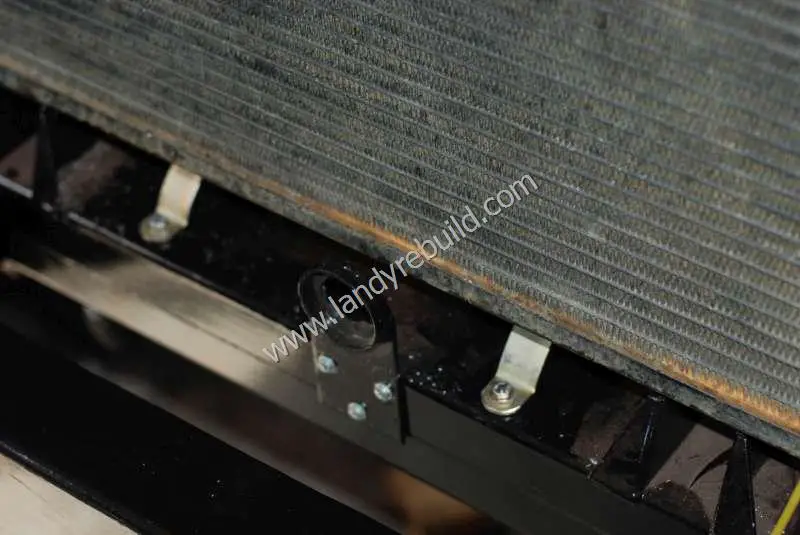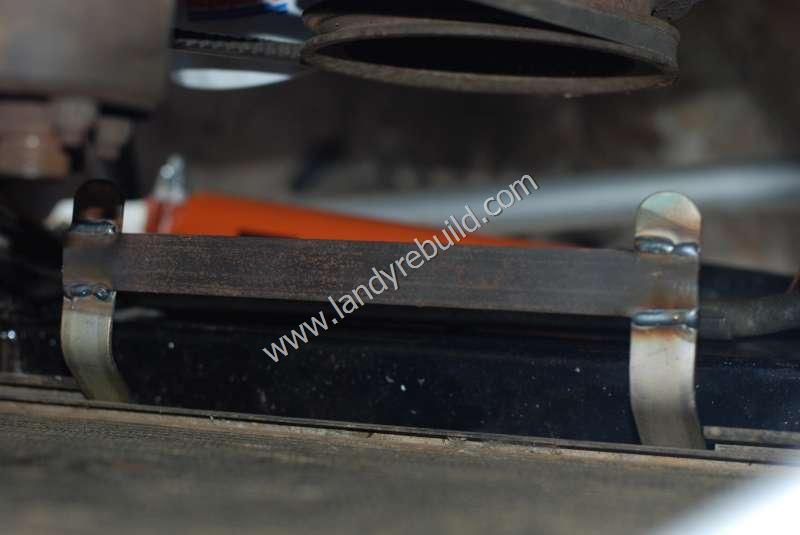Having reconnected the starter motor and electric fuel pump, it was time to reinstall the radiator and twin electric Kenlowe fans. I had previously installed a Kenlowe in my Series III and was impressed with its performance. Why install an electric fan? Well, the engine warms up more quickly, and even though the 110 has a viscous fan, it is still belt-driven, so removing it can apparently save on fuel consumption. I'm sure it's not a tremendous saving, but with a V8 every little helps! (As a side note, Kenlowe have now stopped selling fans for aftermarket use. Other makes are of course now available.)
To remove the old viscous fan, you'll need a 32mm viscous fan spanner. Don't forget, the fan has a right-hand thread. (Keep the fan pulley from rotating by inserting a tommy bar in the hole provided).
The radiator itself was in good condition; when I removed it, I had reverse-flushed it with a hosepipe until the water ran clear. None of the fins were bent or damaged. The radiator was put into place, and the new twin Kenlowe fans went in. These were fitted on the engine bay side of the radiator as suction fans. (To install them as blower fans simply switch the polarity of the wiring connections). Although they come with mounting brackets, I found that I had to modify the lower ones to make a bracket for the bottom of the fans to sit on. This bracket is bolted to the chassis crossmember running underneath, and just in front of, the radiator. The second photo shows the bracket looking down on the engine bay side of the radiator.
For the electrical connections, I decided not to use a permanent live supply, but instead one which would only be live when the ignition is on - this will prevent any inadvertent running-down of the battery. I therefore took an unused white wire from behind the dash and connected that to the adjustable thermostat. This then powers the supplied relay, which I mounted behind the fusebox. The power for the fans themselves is drawn (via a 30A fuse in the fusebox) from the main connection for the battery at the starter motor.
With the fans set to come on when the temperature gauge reads halfway between "normal" and "hot", the only time the fans activate is when the vehicle is stationary in traffic for a while. As long as the vehicle is moving, I find there is sufficient airflow through the radiator such that the fans are not required.

